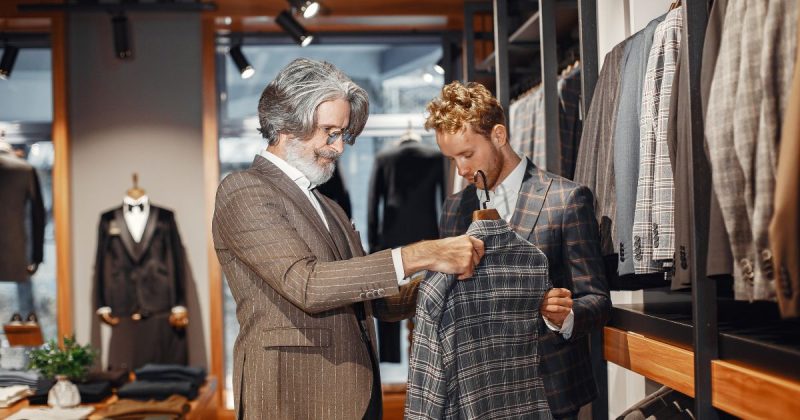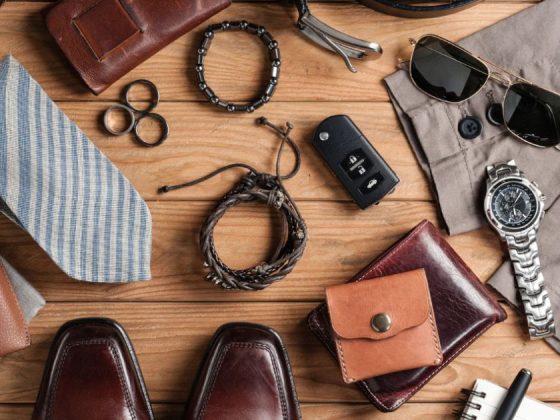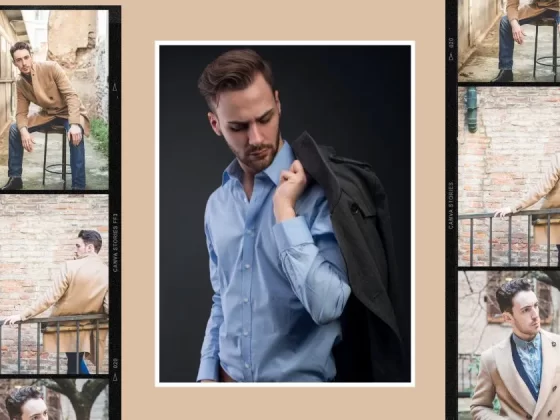
The art of mixing patterns for men’s apparel has evolved from being an intimidating challenge into a powerful expression of individuality, uniqueness, and refinement in 2025. This once-difficult skill has become a bold statement of creativity and modern style, showcasing confidence and innovation. By following a few simple guidelines and mastering the balance of patterns, men can craft extraordinary ensembles that radiate cutting-edge fashion. Whether you’re a dedicated style enthusiast or looking to refresh your wardrobe, this guide will provide everything you need to confidently mix patterns and create stylish outfits.
The Allure of Merging Patterns
Mixing patterns transforms your wardrobe from plain to amazing. It lets you express yourself, make a statement, and have fun with interesting pairings. By breaking the rules with patterns, you inject complexity, texture, and eye candy into your wardrobe. Whether you’re mixing checks and stripes, florals and geometrics, or plaids and polka dots, mixing patterns can be intimidating. But done well, it can create memorable ensembles with a dramatic effect. The key is to be familiar with the fundamentals of mixing patterns.
The Basics of Mixing Patterns
- Select a Dominant Color: Employing a theme color throughout patterns creates harmony in your wardrobe. For instance, match blue stripes on a shirt with a plaid blazer with blue checks to achieve cohesion. This also makes your mixed patterns appear intentional and fashionable.
- Balance Bold and Subtle: Two bold patterns are overwhelming, so balance one bold pattern with one less bold one. Pair a floral shirt with subtle pinstripes or microdots for a balanced and stylish look. Both patterns can be accentuated without conflict.
- Play with Scale: Combining patterns of different scales creates depth and keeps your look from being insane. Match large-scale prints, such as gingham checks, with small-scale, detailed prints, such as polka dots. The difference in scale creates visual interest without compromising balance.
- Use Neutrals for Beginners: Pattern-mixing beginners should begin with a neutral color scheme for a safe and cohesive appearance. Black, white, gray, and beige are good starting points for experimenting without worrying about clashing patterns. Neutral colors make your outfit stylish and ageless.
- Play with Textures: Textures bring variety and add richness to your outfit and patterns. Match a textured tweed jacket with a striped cotton shirt for a balanced, dynamic look. Matching textures reinforces patterns for a visually appealing outfit.
Traditional Pattern Combinations
- Stripes and Checks: Stripes and checks are likely the simplest combinations to learn, striking a balance between structure and elegance. For instance, combining a striped shirt with a checked tie or jacket creates a unified, sophisticated style. To achieve harmony, use a stripe width that is harmonious in size with the checks for visual appeal.
- Florals and Geometrics: Florals introduce organic movement, and geometrics introduce sharpness, combining playfulness and precision into ideal harmony. Combining a floral tie with a geometric pocket square introduces contrast and personality to any suit. This combination reads beautifully on modern, artistic outfits.
- Polka Dots and Plaids: Polka dots are a timeless print that perfectly complements the boldness of plaid. To maintain the balance of the combination, employ small polka dots against big, formal plaid. This combination is ideal for adding charm to semi-formal and casual attire.
- Herringbone and Stripes: With its muted texture, a herringbone jacket is a great match for the crisp lines of a striped shirt. Neutral color choices such as navy, gray, or brown keep the whole outfit dressed but restrained. The ensemble is tidy, sophisticated, and professional enough for office or dress wear.
How to Approach Specific Wardrobe Pieces
- Shirts: Shirts are the canvas for pattern mixing, and they set the tone for your entire outfit. Choose classic patterns like stripes, gingham, or micro checks that are neutral and easy to mix with bold prints. These classic favorites are a solid foundation on which to layer other patterned pieces.
- Ties: Ties are a laboratory for experimenting with patterns; you can add personality to your look. Patterns like polka dots, flowers, or bold stripes create interest and pizzazz. Ensure the colors match your shirt or blazer to create a neat and tidy look.
- Blazers and Jackets: Blazing houndstooth or windowpane patterns on jackets make it a statement garment. Combine it with plain shirts or neutral colors so that the blazer stands out. It forms a good and chic combination.
- Accessories: Pocket squares, socks, and watches with patterned straps work wonderfully in adding subtle patterns to your outfit. These small but stylish additions enhance your overall look and leave space for personal creativity without overwhelming your wardrobe. Accessories are the finishing detail that ties it all together.
- Trousers: Striped trousers can look intimidating, but if styled correctly, they can be the ideal finishing touch. Pair them with plain or subtly patterned tops for balance and to avoid clashing. Pinstripe trousers, for instance, look great with plain or subtly patterned tops, giving an elegant and chic look.
Tips for Mastering Advanced Pattern Mixing
- Incorporate Three Patterns: Once you’ve mastered combining two patterns, elevate your style by integrating a third. For example, a striped shirt pairs well with a plaid tie and a paisley pocket square to create a dynamic yet cohesive look. Ensure one of the patterns remains understated to maintain balance and avoid visual clutter.
- Layering for Impact: Layering is an excellent method of creating depth and dimension in your attire and combining patterns. A good instance is wearing a patterned top beneath a vest and a blazer, presenting an interesting-looking yet coherent ensemble. The strategy makes the outfit fashionable and coordinated with effortlessness.
- Add Texture to Patterns: Including texture patterns such as cable-knit, tweed, or quilted textures adds variety without endangering collision. Combining a textured sweater with a patterned shirt ensures balance and formality in appearance. The method adds depth to your apparel and a sensory point of focus.
- Seasonal Adjustments: Keep your pattern choices seasonal so they are timely and appropriate. In spring, soft flower patterns and pastel colors bring a new and fresh look, and fall demands rich plaids, houndstooth, and terra cotta hues. Seasonal pattern adjustments keep your clothing always in tune and fitting.
Common Mistakes to Avoid
- Overwhelming Designs: Blending extremely busy or complex patterns tends to create visual clutter, which can make your dress unbalanced. Instead, balance intense patterns with less busy designs to achieve harmony in your overall appearance. If you are unsure what works, use traditional combinations as a safe bet.
- Disregarding Proportions: Your patterns’ proportions should be appropriate for your body to look balanced. Thin bodies would suit small patterns, and large bodies would suit large patterns. Staying proportional provides a neat and fitted look.
- Clashing Colors: Even the best-selected patterns can fail if the colors conflict. Opt for color harmony by selecting patterns of similar tones or complementary colors. This makes your outfit appear cohesive and attractive to the eye.
- Ignoring Accessories: Accessories add the finishing touch to make your patterns complement one another stunningly. A tie, pocket square, or patterned socks in the right position can give your outfit depth and personality. Never ignore these small things, as they can take your whole look to the next level.
Why Mixing Patterns Matters
Mixing patterns is not just a styling trick—it’s a display of confidence, individuality, and creativity. By rebelling against conventional styling, men can find a way to express themselves and have a sophisticated, modern look. It demonstrates fashion knowledge beyond the immediate trend level, cementing your status as a chic gentleman. Apart from that, mixing patterns is suitable for sustainability as it creatively promotes the reuse of wardrobe essentials. Rather than purchasing new, you can restyle what you already have by combining them in various ways.
Outfit Ideas to Inspire You
- Office Style: Combine a light blue striped shirt with a navy plaid tie and finish with a traditional herringbone blazer for some sophistication. Solid, neutral-toned trousers will provide balance and highlight the patterned elements. This is ideal for a business but fashionable look.
- Smart Casual: A short-sleeve flower print blouse under a knitted cardigan yields a sophisticated yet relaxed look. Some formality is added with pin-striped trousers, and finishing it off with loafers made of leather adds some sophistication. Perfect for a chic yet informal event.
- Weekend Style: Pair an attention-grabbing checkered shirt with a paisley neckerchief for a stylish look. Wear slim-fit chinos and white sneakers for the ultimate comfortable and relaxed look. This look is perfect for brunch or a lazy day out.
- Evening Look: Place a geometric-patterned blazer at the center of your dress and then have it teamed with a small-scale striped top for contrast. Finish the outfit with plain dark trousers for a smooth and well-balanced look. The attire is exquisite and perfect for dinners or cocktail parties.
Mastering the Art of Mixing Patterns for Men
Combining patterns and designing trend-forward pieces is a skill that requires creativity, confidence, and strategic planning. With the direction in this manual, you will be able to become an instant authority on this men’s fashion trend in no time. Always keep in mind that the intention is to establish a balance between boldness and restraint, producing pieces that draw the eye for all the correct reasons. As you enter the realm of patterns, let your look speak volumes. Be bold, remain eclectic, and most importantly, enjoy the ride—because fashion is about happiness. By combining patterns, you’re not only keeping up with trends but creating them.






